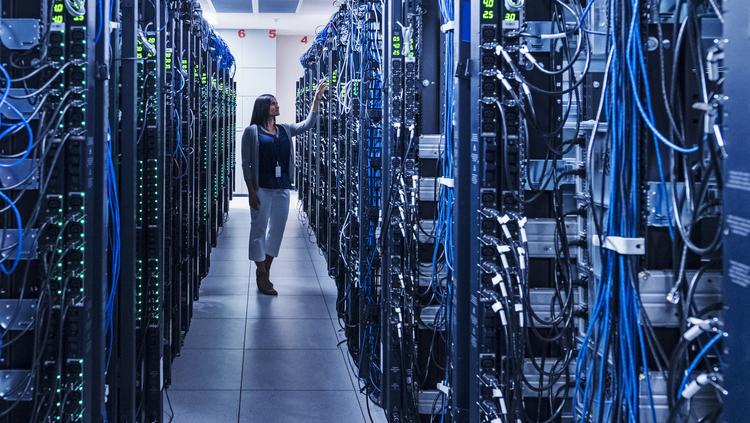Server Maintenance← All Topics The server maintenance
Server maintenance is the process of keeping server software up to date and running so that computer networks can function properly and avoid downtime or data loss. Regular maintenance will keep the server working as expected and help prevent total or partial network outages. It includes tasks such as testing server performance, verifying that automated system monitoring utilities are properly installed and configured, identifying potential security risks, and backing up data. periodically.
If you know how to maintain your server, with just a little time you can get the most out of your investment and significantly extend its life. Servers can be easily maintained to reduce server outages. How the servers work:
A server is a standalone computer that provides data and other services to one or more other computers on a given network. The main benefit of a server is that it allows centralized management and monitoring of network access and network data, and the server can have redundant power, hard drives, and processors that are not normally available on the server. PC.
Server types:
File Server: A central repository for files, accessible by client computers
Domain controller: The server responds to security authentication requests (login, verify credentials, etc.) A domain is a concept where a user can be given access to certain files, folders, network locations using a unique username and password combination and can prevent some users from accessing them. access other private files.
Remote Desktop Server (Terminal): A Remote Desktop Server (or Terminal Server) provides secure remote access to office applications and business application lines for employees or contractors from a centralized server, rather than individual client computers running the software. This makes software deployment and adding staff very scalable and cost-effective.
Web server: hosting and sharing websites on the Internet; Many individuals and small businesses rent web server space from other businesses, but for larger businesses with heavy traffic, a dedicated web host makes sense.
Server maintenance typically requires the following:
check server log file
evaluate disk space
review folder permissions
network temperature monitoring app
Ensure sufficient system redundancy
evaluate security features
install security software patches
Read server logs for security warnings or evidence of hacking attempts
Update anti-virus software on all computers in the network
Update important service packs and update software
perform full backups regularly to ensure important data can be restored from storage in the event of a system failure
Server maintenance steps for success:
- Check if your backup is working. Before making any changes to the server’s systems and databases, make sure that you back up before making any updates and that your backups are working properly. often. Make sure you have selected the correct backup and the correct location.
- Check disk usage. Keep your disk storage clean and don’t use your host system as storage. Delete old emails, logs, and unused software versions. Smaller data footprint means faster recovery. Monitor your disk usage if your partitions reach 100%, your server may go down, database tables and data may be corrupted and lost.
- Monitor RAID alarms. Monitor your RAID status; all servers must use RAID. A single disk failure can lead to an entire system failure.
- Update your operating system. Always keep your system up to date if you are using Linux as that version of the operating system is updated frequently and it can be difficult to keep up to date with those updates. To work around this issue, you can use automated patch management tools and set up monitoring to alert you when the system is out of date. If you update your server manually (or don’t), you may miss important security updates. If you can’t automate your updates, create a schedule to update your system. This will prevent your system from being hacked.
- Update your dashboard. If you are using cpanel hosting, remember to keep it up to date. This will update your system and fix any known storage issues.
- Check for app updates. Update your web applications, if you are using CMS or any other open source program for your web application, especially popular programs like WordPress. 7. Check out remote management tools. Maintain your remote server via remote control panel, remote reboot and remote rescue mode, these are essential tools for remote server management.
- Check for hardware errors. Hardware problems are common but make a big deal so you can check the logs for any hardware problems like disk read errors, network errors.
- Check the server usage. Review the server’s disk, CPU, RAM, and network usage.
ten. Review user accounts. If you’ve had employee changes, cancellation customers, or other user changes, you’ll want to remove those users from your system. Hosting legacy sites and users is both a security risk and a legal risk. - Change the password. Change all passwords every 6-12 months, especially if you’ve given your password to someone else for maintenance.
- System security check. Periodically review your server security with a remote testing tool like Nessus.

